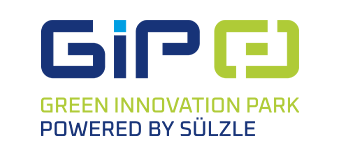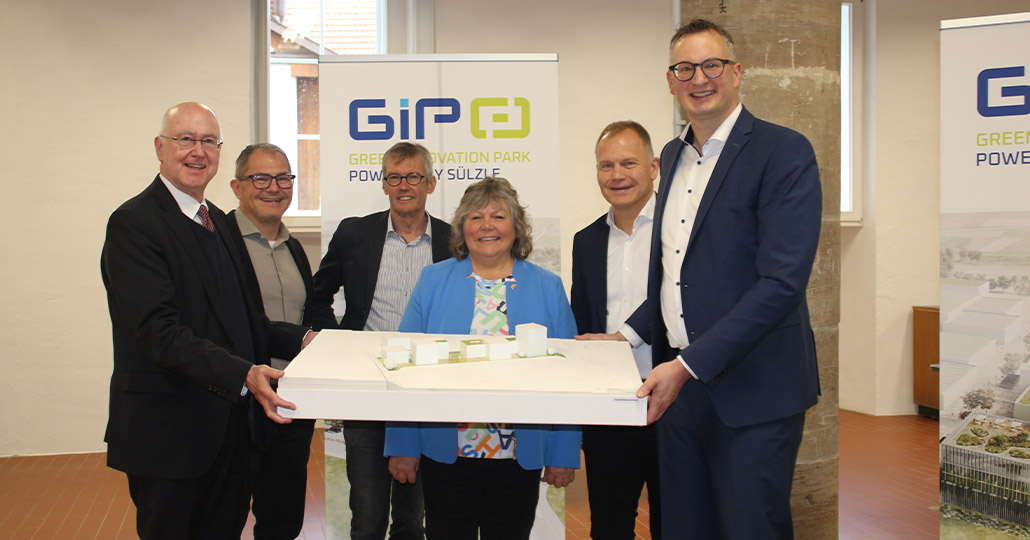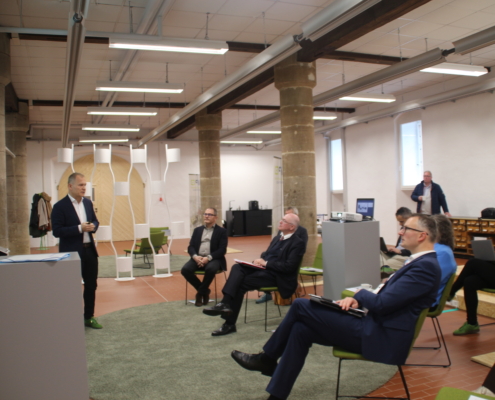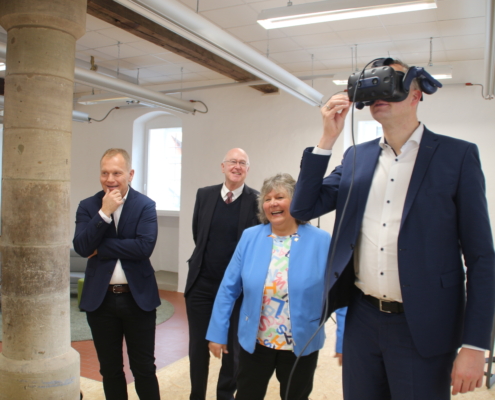Visit from Stuttgart
Green Andreas Schwarz promises support for the Green Innovation Park
- NOVEMBER 2022
Andreas Schwarz, leader of the Green Party in the state parliament, and his colleague Martina Braun visited the 500-year-old Rosenfelder Fruchtkasten, where the GIP team is currently working on the project. Both were very impressed when Heinrich Sülzle, Managing Partner of the SÜLZLE Group, presented the Green Innovation Park (GIP) project to the guests and took them on a tour of the long history of the family business, which his great-grandfather Wilhelm Sülzle founded as a blacksmith and which is now a globally active company with 1000 employees. SÜLZLE also builds the impressive chalice supports in the new Stuttgart railway station: “Art in construction”, as Heinrich Sülzle called this challenge. And here, one is always thinking about the ecological footprint; the company is climate-neutral, works together with start-ups that are working on processing plastic waste and making it available again as a raw material, or even cleaning up silted-up bodies of water. In addition, Sülzle supports various compensation projects that make a positive contribution to sustainable development in the sense of the UN’s Sustainable Development Goals. South of Stuttgart, directly on the A81 near Sulz / Vöhringen, an extraordinary construction project called “Green Innovation Park” is being built on the initiative of the family-owned company SÜLZLE. Within its environmentally friendly energy concept, the Green Innovation Park and its partner Bayernwerk Natur are planning, among other things, the construction of an electrolyser that produces green hydrogen from renewable energies and is thus part of the model region Green Hydrogen Baden-Württemberg. The Green Innovation Park is being built on the site of an old brickyard near Vöhringen, which belongs to SÜLZLE and is already prepared to become a lighthouse project: The industrial estate of the future is to be created here, in buildings made of wood and with everything that makes the green heart happy, and of course that of SÜLZLE; “This is a heart project of ours,” says Heinrich Sülzle. “After all, we only have this one earth!” The buildings are planned digitally, and in such a way that they can be completely dismantled later.
Photovoltaics, geothermal energy, hydrogen and biogas are being used, a daycare centre and flats are planned, a connection to public transport, charging stations for e-bikes and cars, and the settlement of start-ups and companies that think just as sustainably as SÜLZLE. But political support is lacking, according to Heinrich and Andreas Sülzle. Because with the loss of subsidies, rising interest rates and construction costs, the project is becoming much more expensive than originally planned. Andreas Schwarz wants to campaign for the project in Stuttgart and Berlin in order to find suitable funding pots, including those of the EU. He also emphasised that if there were no funding possibilities for a future-oriented project of this kind in Germany, they would have to be found. Schwarz wants to build bridges to the federal government in Berlin and to the Green State Secretary in the Ministry of Economics, Dr. Franziska Brandtner from Baden-Württemberg.
Because: “This is what Baden-Württemberg must look like in 2030, this is how we imagine the locations of the future!” It is precisely these future technologies that the state needs, Martina Braun also emphasised. All stakeholders must be brought together around one table. “That is why I am here today,” said Schwarz. “It is precisely in such projects that we must invest now, and that is where we want to go!





